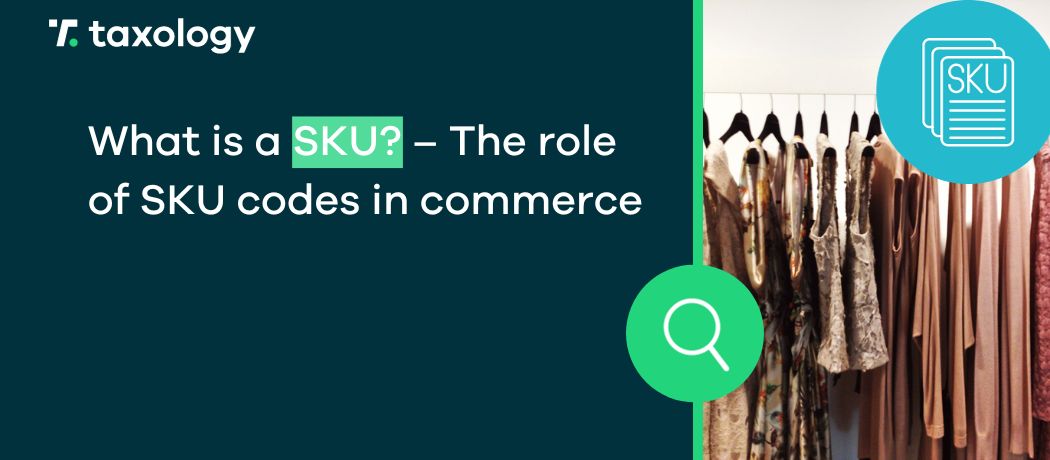France is one of the largest and wealthiest countries in Europe, making it an extremely attractive market for expansion for many entrepreneurs in the e-commerce sector. However, like any other […]
Read in: 5 minWhat is a SKU – the role of SKU codes in commerce
- Last update: 23.02.2024
- Published: 26.03.2021
- Read in: 6 min
If you sell products online, you must have some sort of way to track them. If our product has a range of colour or size variants, or is sold in multiple languages, the product name alone will no longer suffice. Product barcodes turn out to be very helpful. SKU and ASIN are product identification systems, which are paramount from an Amazon seller’s point of view. However, other systems besides these include: EAN, GTIN, UPC.
SKU number
SKU stands for Stock Keeping Unit and is a number or alphanumeric code assigned by retailers. Each code is supposed to be unique for each product, however, the retailer has the freedom to decide what this number should look like. They are used to locate, organise and manage products across all of the vendor’s databases.
What is the difference between a SKU and a standard barcode?
The most significant difference is that the barcodes are assigned by the manufacturer and remain the same regardless of where the product is sold next. On the other hand, SKU codes are personalised for each retailer. They are specifically assigned by the vendor and their purpose is to have better control over their inventory. They are usually placed on the packaging.
So if several shops or vendors on Amazon, Allegro or eBay sell the same product, the SKU codes will differ for each of them. There is also a difference in the actual format of the codes, as universal barcodes, also known as GTINs (Global Trade Item Number), only consist of numbers, while SKU codes can include numbers, letters.
When is a SKU coding system necessary?
The bigger the e-commerce, the more sales channels, the more SKU codes will be required. Przejrzyste oznaczenie produktów w systemie zarządzania zapasami pozwala na znacznie lepszą świadomość i kontrolę nad zapasami. They give us a complete picture of the condition and location of our assortment, and therefore enable us to better manage it. In addition, we can analyse sales much more easily and react more quickly to potential shortages.
SKU codes can help organise storage space and streamline the process of collecting and shipping goods. The same applies to stationary points, provided we have any.
Furthermore, SKU codes are also used for marketing purposes – for example to suggest similar products for remarketing purposes. SKU barcodes are also a mandatory condition for listing on Amazon’s marketplace. Find out how to sell on Amazon.
What information can a SKU code contain?
Depending on your business needs and product specifications, SKU codes may contain a variety of information. By using letters and numbers, you can easily indicate:
- the manufacturer
- product category or type
- Version
- Colour
- Size
- and much more, depending on the product
When creating your own standard of SKU codes, make sure that it is tailored to all the product categories you are offering. Fun fact SKU codes can be of any length, so retailers can tailor them to the specific needs of their product range.
How do I create a standard for SKU codes?
The standard of SKU codes should be well aligned with the offer’s needs so that it can incorporate any key parameters. What does such a code look like?
Let’s use a clothing shop as an example. With each clothing item, it has to take into account the type of garment, the size, the colour. Below is the code for a S-sized black T-shirt.
BR-TS-001-BL-S
- BR – indicate the product’s brand, so the letters will be an abbreviation for a specific clothing company.
- TS – product type (t-shirt)
- 001 – individual product code (basic t-shirt)
- BL – colour variant (black)
- S – size (S)
Depending on the variety of assortment, the format of the SKU code has to match its needs. If we sell laptops, the codes will have to include all the attributes, such as hard drive size or RAM. In the case of a wide assortment, the code can, of course, be longer and include, for example, a product category.
SKU codes when selling on Amazon
The SKU labelling standard is required by many marketplace platforms, including Amazon. Every product sold on Amazon must have a unique SKU code.
Amazon also assigns an internal FNSKU (Fulfillment Network Stock Keeping Unit) number to each seller’s products that use FBA warehouses. Vendors are required to label all shipments, delivered to warehouses, using these codes.
Other product identification methods
In addition to SKU codes, there are several other product identification standards that have different applications and are required, to be able to sell on certain marketplaces.
So what is an ASIN number?
ASIN, or Amazon Standard Identification Number, is an internal number automatically assigned by Amazon when listing products. It can be found in the product URL and in the additional information on the product page. Thanks to the ASIN search engine, customers can search for products with a specific ASIN number and we can identify any product sold through Amazon using it.
Find out more on what an ASIN is and what role it plays.
What does FNSKU stand for?
The Fulfillment Network Stock Keeping Unit is an internal Amazon number assigned to a specific seller’s product. Based on this number, Amazon identifies which products held in its warehouses, belong to a particular seller. If you sell on Amazon using the FBA model and dispatch your products to the warehouse, then you are required to label each bulk package with this number.
How do I know that I need a GTIN number?
GTIN is a global marking and identification system used to identify products and their manufacturers. The acronym stands for Global Trade Item Number and was introduced to unify the pre-existing EAN (European Article Number) and UPC (Universal Product Code) systems.
GTIN numbers are assigned and managed by the global organisation GS1, an organisation with a network of local branches operating at a global scale. EAN and UPC codes are often equated with GTINs, but in reality they aren’t entirely the same thing. EAN/UPC have a barcode form within which the GTIN is encrypted.
On major selling platforms such as Amazon and eBay, a GTIN is required by many product categories and strongly suggested in others.
In August 2020, the Polish marketplace, Allegro also introduced such a requirement. If you sell products, manufactured by you, it is worth buying a pool of GTIN numbers to avoid problems with listing them on Amazon or eBay later.




